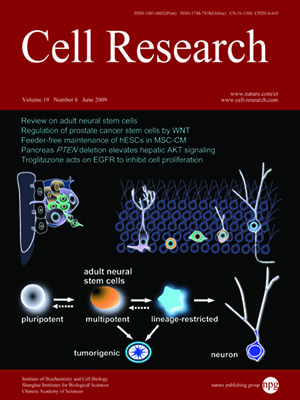
Volume 19, No 6, Jun 2009
ISSN: 1001-0602
EISSN: 1748-7838 2018
impact factor 17.848*
(Clarivate Analytics, 2019)
Volume 19 Issue 6, June 2009: 768-782
ORIGINAL ARTICLES
Functional conservation of the meiotic genes SDS and RCK in male meiosis in the monocot rice
Ling Chang1, Hong Ma2,3 and Hong-Wei Xue1
1National Key Laboratory of Plant Molecular Genetics, Institute of Plant Physiology and Ecology, Shanghai Institutes for Biological Sciences, Chinese Academy of Sciences, 300 Fenglin Road, Shanghai 200032, China
2Department of Biology and the Huck Institutes of the Life Sciences, Pennsylvania State University, University Park, PA 16802, USA
3School of Life Sciences, Fudan University, Shanghai 200433, China
Correspondence: Hong-Wei Xue,(hwxue@sibs.ac.cn )
The Arabidopsis SDS (SOLO DANCERS) and RCK (ROCK-N-ROLLERS) genes are important for male meiosis, but it is still unknown whether they represent conserved functions in plants. We have performed phylogenetic analyses of SDS and RCK and their respective homologs, and identified their putative orthologs in poplar and rice. Quantitative real-time RT-PCR analysis indicated that rice SDS and RCK are expressed preferentially in young flowers, and transgenic RNAi rice lines with reduced expression of these genes exhibited normal vegetative development, but showed significantly reduced fertility with partially sterile flowers and defective pollens. SDS deficiency also caused a decrease in pollen amounts. Further cytological examination of male meiocytes revealed that the SDS deficiency led to defects in homolog interaction and bivalent formation in meiotic prophase I, and RCK deficiency resulted in defective meiotic crossover formation. These results indicate that rice SDS and RCK genes have similar functions to their Arabidopsis orthologs. Because rice and Arabidopsis, respectively, are members of monocots and eudicots, two largest groups of flowering plants, our results suggest that the functions of SDS and RCK are likely conserved in flowering plants.
Cell Research (2009) 19:768-782. doi: 10.1038/cr.2009.52; published online 5 May 2009
FULL TEXT | PDF
Browse 1861


